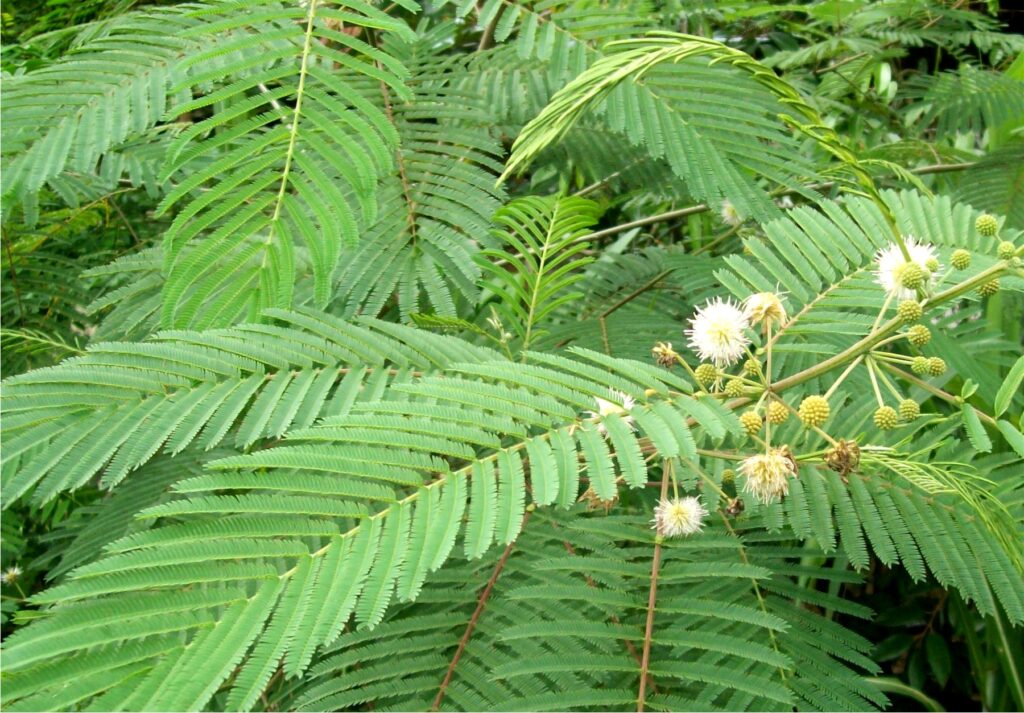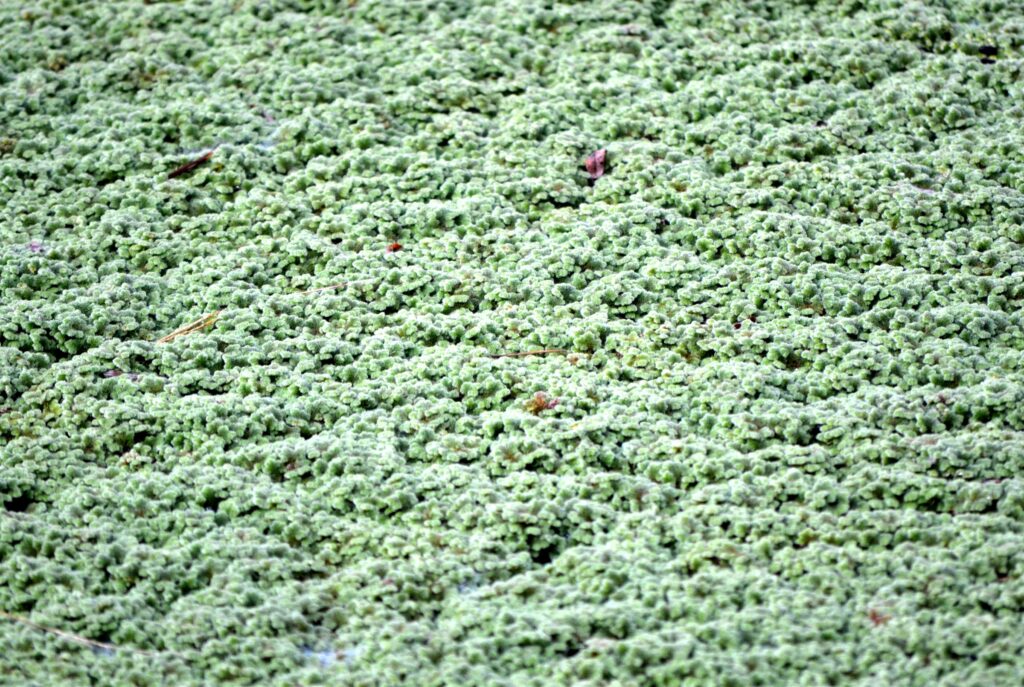Text and Photos by Henrylito D. Tacio
In recent years, Filipino farmers are using commercial fertilizer because they believe it will augment their income. They are told that by putting synthetic fertilizer, production from their farm will be boosted.
Unknowingly, commercial fertilizer is an additional cost to growing crops. But there are fertilizers that farmers can use without spending their hard-earned money. In fact, these fertilizers are available all year round and for free.
Unfortunately, these organic fertilizers are not given much attention by farmers. In fact, some of them may consider them as waste and of no value at all. But at the Mindanao Baptist Rural Life Center (MBRLC) Foundation, Inc., azolla and nitrogen-fixing shrubs like ipil-ipil are being turned into fertilizer.
“We found that by growing them in our farm, we can lessen our expenses,” says Jethro P. Adang, who directs the non-government organization based in the southern part of the Philippines.
Nitrogen is one of the most essential elements needed by plants for their growth. Take the case of rice. “Any rice plant, modern or traditional, requires one kilogram of nitrogen to produce 15 to 20 kilograms of grain,” said the Laguna-based International Rice Research Institute (IRRI). “Most tropical soils imbibe sufficient nitrogen naturally to grow about one ton or 1.5 tons of rice per year. To augment yields above that, nitrogen must be provided.”
Nitrogen is abundant in the earth’s atmosphere. But only very few plants can assimilate nitrogen directly from the atmosphere; most plants obtain their nitrogen from complex compounds in the soil. Farmers can add fertilizers to the soil that may be organic (composed of organic matter) or inorganic (made of simple, inorganic chemicals or minerals).
Azolla
In the 11th century, farmers in the Kingdom of Dai Viet grew the dinky water fern in their rice fields. They did not know about nitrogen – the most critical requirement for plant growth – but they knew the fern made their rice grow better.
For hundreds of years, the descendants of those ancient Vietnamese and Chinese farmers used the water fern – now known as azolla – to fertilize their crops. Today, it is being followed by some farmers in Asia.
The use of azolla as a fertilizer was first promoted in the Philippines in the early 1980s. Studies show that rice yields in plots with azolla were higher than those without by more than a ton in the same cropping period.
Anabaena azollae, a blue-green alga that thrives in the cavities of azolla leaves, can fix or draw nitrogen from the air. Azolla floats on the water between rice plants. When it dies and is incorporated into the soil, decomposition releases nitrogen.
“Farmers who grow azolla are actually growing their own fertilizers,” Adang says. Azolla contains 4 percent nitrogen on a dry weight basis (dry weight is 5 percent of fresh weight); 0.5-0.9 percent phosphorus; and 2-4.5 percent potassium.
For only three hours, Adang claims, a farmer can grow adequate azolla to increase yields equivalent to that produced by 30-60 kilograms of nitrogen fertilizer per hectare. Residual soil nitrogen is increased.
Ipil-ipil
About 60% of the country’s total land area of 30 million hectares is considered uplands. Most of these are susceptible to soil erosion. One of the best methods to arrest erosion is to plant nitrogen-fixing trees like ipil-ipil (known scientifically as Leucaena leucocephala).
Fortunately, ipil-ipil can also be a natural source of fertilizer as its foliage rivals manure in nitrogen content. One study showed that ipil-ipil leaves were comparable to ammonium sulfate in supplying the nitrogen requirement of rice plants in flooded and non-flooded soil conditions. Corn grain yields were equally as high whether fertilized with herbage from intercropped ipil-ipil in single hedgerows or with commercial fertilizer.
But there’s more to ipil-ipil than just fertilizer. Its aggressive root system “breaks up impervious subsoil layers, improving moisture penetration and decreasing surface runoff,” to quote the US National Academy of Science report. “Nutrients from deep strata are gradually deposited on the surface through decay of the leaves and other plant parts; soil organisms increase, topsoil humus rebuilds.”
At the MBRLC, leaves of ipil-ipil are used as green manure for vegetable crops grown in its Food Always In The Home (FAITH) gardens. The leaves are placed inside the basket or trench composts. In addition, it is used as a hedgerow species to control erosion in its famous Sloping Agricultural Land Technology (SALT) and its three other modifications.
The multifarious uses of ipil-ipil have been known by the innovative farmers in Naalad, Cebu. Leucaena: Promising Forage and Tree Crops for the Tropics reports: “For over 50 years, they have used Leucaena for erosion control, soil reclamation, and fertilization on extremely deep, rocky hillsides.

“They plant blocks of their land with Leucaena to control erosion and provide soil improvement. Some of the leaves are harvested, dried, and sold as leaf meal to local feed millers; almost, most households keep goats that are fed Leucaena mixed with coconut and banana leaves. After 3-6 years, the blocks with Leucaena are cleared (large pieces of the wood are sold for fuel) while an equal number are seeded with Leucaena and left fallow…”
As feeds
The MBRLC also uses ipil-ipil as feed for their goats as it is very high in crude protein. Generally, the young stem and leaves can be dried and pulverized into leaf and stem meal. However, when it is used as fresh-cut forage, it is given to goats together with other forages like madre de cacao and the two introduced species, Flemingia macrophylla, and Desmodium rensonii.
The late agricultural journalist Rudy A. Fernandez, in an article which appeared in Philippine Star, noted: “Ipil-ipil has so far been the best known source of leaf meal because of its high nutritive value. In fact, in the early 1980s, growing ipil-ipil for its leaves developed into a cottage industry in Central and Eastern Visayas and northern Luzon.”
Azolla is also a good feed for livestock. It is very rich in proteins, essential amino acids, vitamins (vitamin A, vitamin B12, and Beta- Carotene), growth promoter intermediaries, and minerals like calcium, phosphorus, potassium, ferrous, copper, and magnesium, among others. On a dry weight basis, azolla contains 25-35 percent protein, 10-15 percent minerals, and 7-10 percent of amino acids, bio-active substances, and bio-polymers. The carbohydrate and fat content of azolla is very low.

“We raise azolla in our ponds using nets,” says Adang. “Every afternoon, we collect them and use them as feed for our tilapia. In only a matter of minutes, the azolla are immediately gone. Tilapia loves to eat them.”
Azolla can also be used as feed for dairy cattle, pigs, ducks, and chickens. Studies reported increases in milk production, the weight of broiler chickens, and egg production of layers when these are fed with azolla as compared to conventional feed.

